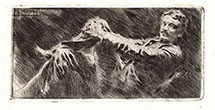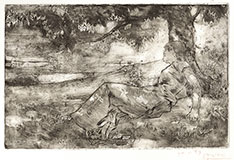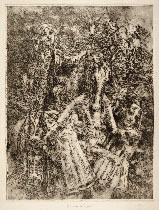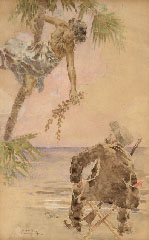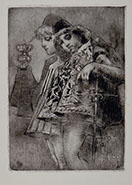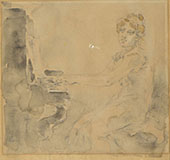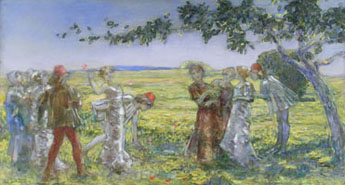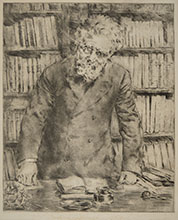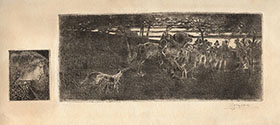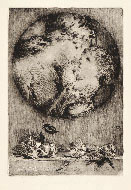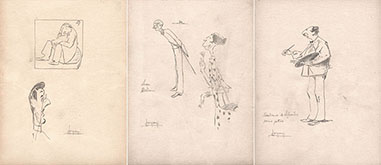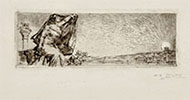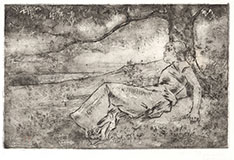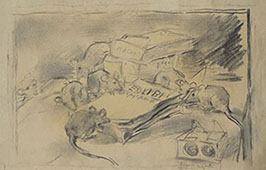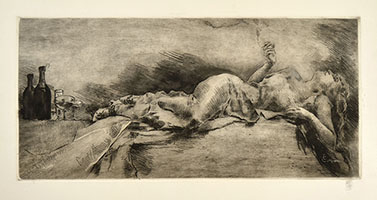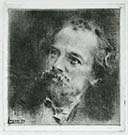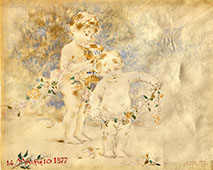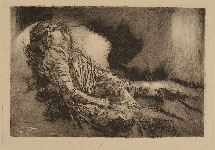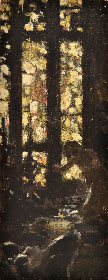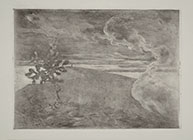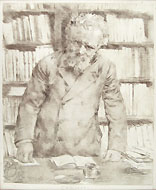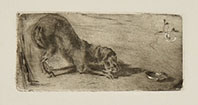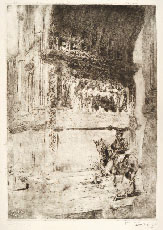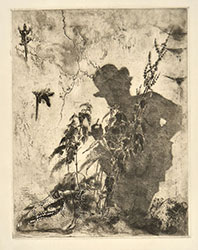(Milan 1852 - 1917)
RUIT HORA (A clock face), c. 1893-96
Etching, c. 1893-96; a fine impression, richly and skillfully printed, working on the surface tone with monotypic effects, on wove white paper. Second state of two. Signed and titled in the surface tone LConconi, ....ruit hora...; inscribed in pencil pr XVIII LC. With large margins; minimal foxing in the margins, otherwise in fine condition. To the platemark 350 x 350 mm, the entire sheet measuring 515 x 462 mm. See M. Bianchi, G. Ginex, Luigi Conconi incisore, Milan, 1994; cat. no. 38.
For the genesis of this etching as part of a project by Conconi and the sculptor Paolo Troubetzkoy to create clocks for sale, see Bianchi-Ginex 38. These clocks, never actually realized, were intended to constitute a daily memento mori, inspired by the images of Baroque art.
Conconi studied architecture at the Accademia di Brera and the Politecnico di Milano. He came into contact with members of the literary and artistic circles of the Scapigliatura – the Italian equivalent of the French Bohème– notably Tranquillo Cremona and Daniele Ranzoni, both of whom influenced his early paintings. In the 1880s Conconi moved from the Realism of Scapigliatura toward Symbolism. The awards he received in Paris in 1900 and Munich in 1913 led to his international recognition.
Conconi, who personally saw to the production of virtually all his plates, was the leading exponent in Lombardy of Acquaforte monotipata. This technique involved the artist drawing directly onto the ink covering the plate, prior to pulling the impression. In this way each resultant print has different characteristics.

